Unveiling the Saber Tooth Tiger: A Journey Through Prehistoric Majesty
The name itself conjures images of a formidable predator, a creature perfectly adapted for a world vastly different from our own. The saber tooth tiger, or more accurately, the various species of machairodonts that fit this description, represents a captivating chapter in Earth’s evolutionary story. These weren’t single animals, but a diverse group of extinct felids renowned for their exceptionally long canine teeth. This guide explores their biology, behavior, and legacy, offering insight for students, animal enthusiasts, and anyone curious about these ancient hunters.
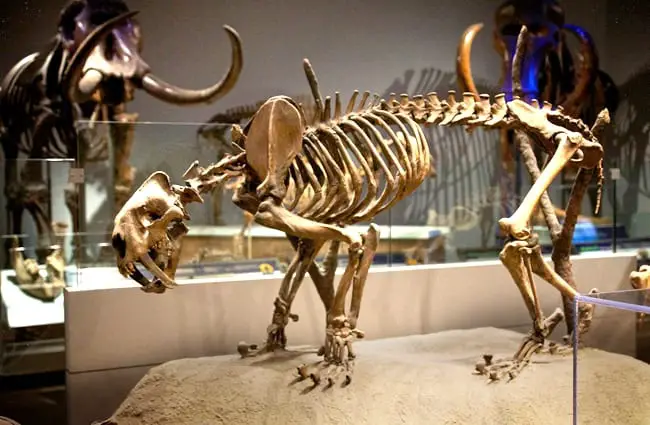
What Exactly Was a Saber Tooth Tiger?
The term “saber tooth tiger” is a bit of a misnomer. It doesn’t refer to a single species but a group of extinct predators characterized by elongated canine teeth. These animals belong to the subfamily Machairodontinae within the family Felidae, the cat family. They flourished from the Oligocene epoch, approximately 30 million years ago, to the late Pleistocene, around 11,700 years ago. The most well known species include Homotherium, Megantereon, and Smilodon. Smilodon fatalis, often considered the archetypal saber tooth, was a powerfully built predator found in North America, while Smilodon populator inhabited South America.
Habitat and Distribution
Saber tooth tigers weren’t confined to a single environment. Their fossils have been discovered across North America, South America, Europe, Asia, and even Africa. This wide distribution suggests adaptability to diverse habitats. They inhabited grasslands, woodlands, and forested areas. Smilodon, for instance, preferred the open woodlands and grasslands of North America, while other machairodonts occupied different ecological niches. The presence of their fossils within the La Brea Tar Pits in Los Angeles provides a remarkable snapshot of their life in a specific environment.
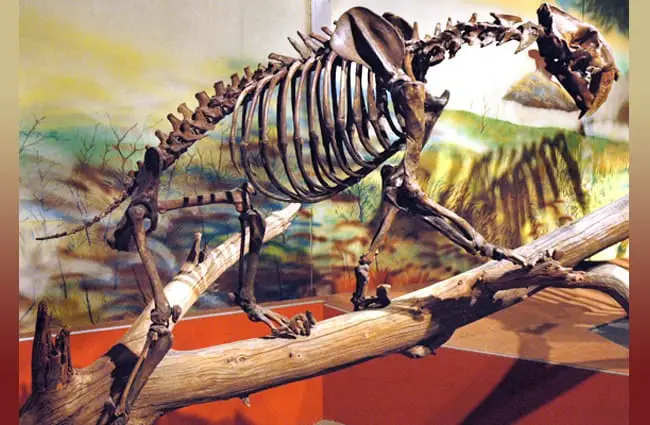
Anatomy and Physical Characteristics
The defining feature of machairodonts is, of course, their saberlike canines. These teeth could reach lengths of up to 28 centimeters in Smilodon, and were remarkably robust despite their length. Contrary to popular belief, these teeth weren’t primarily used for slashing. Instead, they were likely used for precision stabbing, delivering a fatal wound to the throat or underside of prey.
Beyond the canines, saber tooth tigers were powerfully built animals. They possessed robust skeletons, strong limbs, and powerful muscles. While not necessarily faster than modern big cats, they were capable of delivering tremendous force. Their bodies were often shorter and stockier than modern lions or tigers, suggesting a different hunting style. Some species, like Homotherium, had longer legs and were likely better adapted for chasing down prey.
Diet and Hunting Strategies
Saber tooth tigers were apex predators, preying on a variety of large mammals. Fossil evidence suggests that Smilodon frequently targeted herbivores such as bison, camels, horses, and even young mammoths and mastodons. The La Brea Tar Pits fossils offer a wealth of information about their prey selection.
The exact hunting strategy is still debated. Initially, it was thought they used their canines to slash the throats of their prey. However, recent biomechanical studies suggest that the canines were too fragile for slashing. The prevailing theory is that they used a precision bite, delivering a fatal stab to the throat or underside, severing major arteries. This required accuracy and a powerful bite force. Some species may have hunted in groups, increasing their chances of success against large prey.
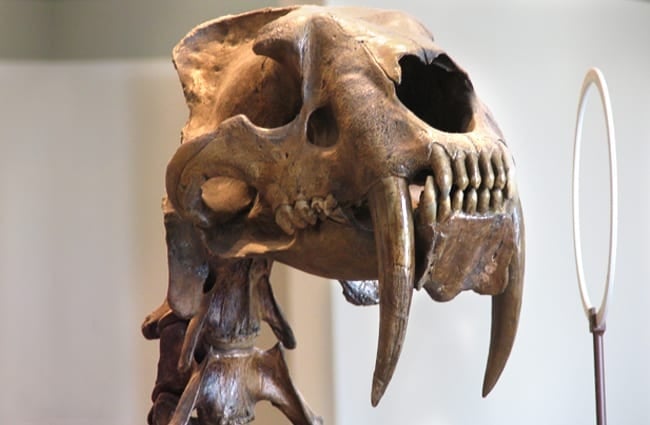
Reproduction and Life Cycle
Information about saber tooth tiger reproduction is limited, as it is difficult to glean details from fossils. However, based on comparisons with modern big cats, it is likely they had a similar reproductive cycle. They were likely solitary animals, except during mating season. Females would give birth to a litter of one to five cubs.
Cubs would have been dependent on their mother for several months, learning to hunt and survive. The mortality rate for cubs was likely high, as with most predators. Fossil evidence suggests that saber tooth tigers may have lived for around 10 to 15 years in the wild.
Evolution and Extinction
The evolutionary history of machairodonts is complex. They first appeared in the Oligocene epoch, evolving from earlier felids. Over millions of years, they diversified into various species, each adapted to different environments. Their extinction occurred during the late Pleistocene, around 11,700 years ago, coinciding with the extinction of many other large mammals.
The exact cause of their extinction is still debated. Climate change, which led to shifts in vegetation and prey availability, is thought to have played a role. Competition with other predators, such as lions and wolves, may have also contributed. The decline of their primary prey species likely exacerbated the situation. A combination of these factors probably led to their eventual demise.
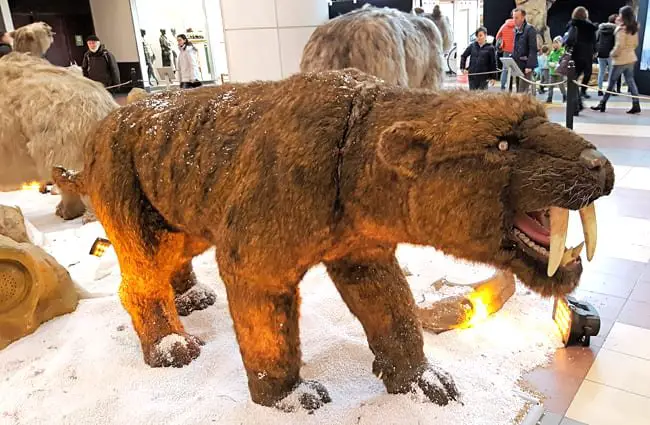
Saber Tooth Tigers and Their Ecosystem Role
As apex predators, saber tooth tigers played a crucial role in regulating populations of herbivores. By controlling herbivore numbers, they prevented overgrazing and helped maintain the health of plant communities. Their presence also influenced the behavior of prey animals, promoting genetic diversity and adaptation. As scavengers, they would have also consumed carrion, contributing to nutrient cycling.
Saber Tooth Tigers in Human Culture
The saber tooth tiger has captured the human imagination for centuries. Their fossils have been discovered by indigenous peoples for millennia. In more recent times, they have become popular subjects in art, literature, and film, often depicted as formidable and awe inspiring creatures. Their image is often used to symbolize power, ferocity, and prehistoric majesty.
Saber Tooth Tiger Facts
- Not all “Saber Tooth Tigers” are the same: Several species fall under this umbrella term.
- Canine Length: Some species had canines exceeding 28 centimeters long.
- Powerful Bite: Despite fragile teeth, they had an incredibly strong bite force.
- La Brea Tar Pits: These pits in Los Angeles are a treasure trove of saber tooth fossils.
- Possible Social Behavior: Some evidence suggests they may have lived and hunted in groups.
- Extinction Timing: They went extinct around 11,700 years ago, coinciding with the end of the last ice age.
- Geographical Range: Fossils have been found across North and South America, Europe, Asia, and Africa.
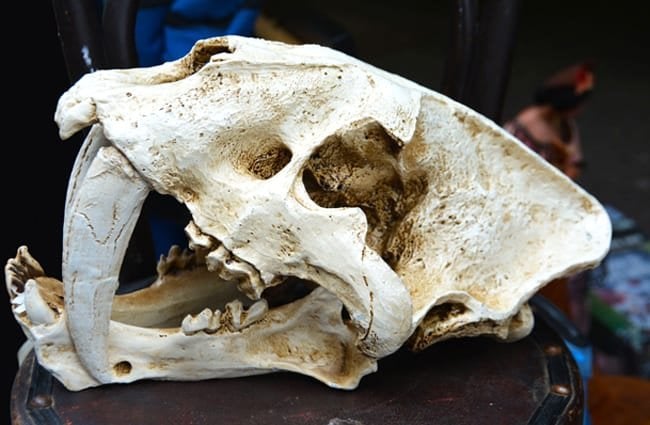
Conclusion: A Legacy of Power and Mystery
The saber tooth tiger remains a captivating figure in the prehistoric world. Through studying their fossils and reconstructing their lives, we gain valuable insights into the evolution of predators, the dynamics of ancient ecosystems, and the forces that shape life on Earth. While these magnificent creatures are long gone, their legacy continues to inspire awe and wonder.

![Red Angus Closeup of a beautiful Red Angus cowPhoto by: U.S. Department of Agriculture [pubic domain]https://creativecommons.org/licenses/by/2.0/](https://animals.net/wp-content/uploads/2020/03/Red-Angus-4-238x178.jpg)




![Red Angus Closeup of a beautiful Red Angus cowPhoto by: U.S. Department of Agriculture [pubic domain]https://creativecommons.org/licenses/by/2.0/](https://animals.net/wp-content/uploads/2020/03/Red-Angus-4-100x75.jpg)

